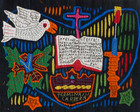Molas of the Kuna People
The women of the Kuna people, who live in the San Blas Archipelago off the northeastern coast of Panama, have an unusual way of expressing their religious beliefs. They witness to them on hand-stitched, rectangular panels of layered cotton cloth, attached to the front and back of their blouses. These decorative faith and fashion statements, known as molas (the Kuna word for “shirt” or “clothes”), intertwine brilliantly colored geometric patterns with imagery drawn from nature, native folklore, and Bible stories.
Anthropologists trace the origins of mola art back to the elaborate designs Kuna women once painted on their bodies. When Spanish colonizers and missionaries compelled them to wear clothes, they simply transposed these decorative motifs onto fabric.
Molas are made through a complicated process of reverse applique stitching. From two to seven layers of different colored cotton cloth are basted together to form a mola panel. Kuna sewers first make a pencil design on the top layer of cloth. Then, using a finely pointed pair of scissors, they snip through the fabric pieces to reveal the colors they want to be seen from the layers underneath. The rough edges of the cloth holes are notched, folded under, and closed off with a hemming stitch. The largest areas of the design are usually cut away from the upper layers of cloth. Sometimes, new colors are added by sewing in separate patches of fabric.
Well-intentioned Peace Corps workers brought in treadle machines, so the Kuna people could make more molas for the tourist trade--with an inevitable drop in quality. The most prized molas are panels, hand-stitched in the time-honored way, which have actually been worn on blouses. Although mola-making dates back no more than 170 years, it has become a focus of Kuna ethnic pride. When Panamanian authorities tried to pressure the San Blas islanders to abandon their traditions and wear modern dress, they rebelled in 1925 and eventually won home-rule.
The Kuna molas in my collection display a curious mix of conservative Protestant and Pentecostal motifs, such as the cross with two open Bibles in Christ, the Only Hope, traditional Roman Catholic imagery, depicting the Passion of Christ like The Sixth Station of the Cross, and unusual interpretations of Christian lore such as Saint Francis with the bird on his shoulder, beside three crosses and four angelic creatures. Jesus & the Woman at the Well holds the unique distinction of having been made by a male mola-stitcher named Prado.
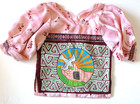
Descent of the Holy Spirit
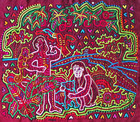
Adam & Eve in the Garden of Eden
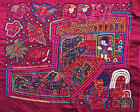
Noah & the Ark
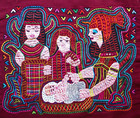
The Rescue of Baby Moses
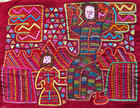
Moses Parts the Red Sea
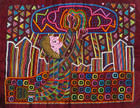
Moses Receives the Ten Commandments
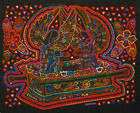
The Ark of the Covenant
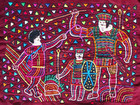
David Kills Goliath
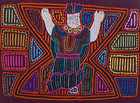
King Solomon
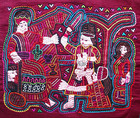
The Wisdom of Solomon

Jonah and the Great Fish

Jonah & the Whale
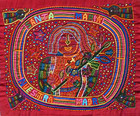
Holy Mary Our Mother
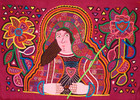
immaculate Heart of Mary
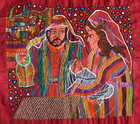
The Holy Family
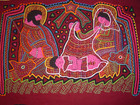
The Nativity
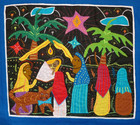
Nativity with Cat

The Nativity
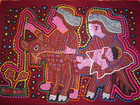
The Flight Into Egypt
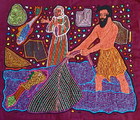
The Calling of the Apostle Peter
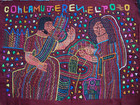
Jesus & the Woman at the Well
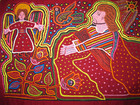
Jesus in the Garden
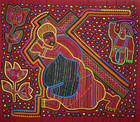
Christ Carrying the Cross

The Sixth Station of the Cross
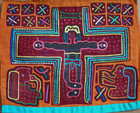
Crucifixion I

The Crucifiixion II
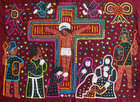
The Crucifixion III
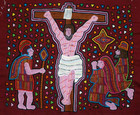
The Crucifixion IV
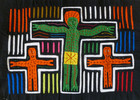
The Crucifixion V
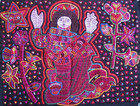
The Triumphant Christ
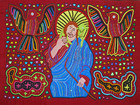
The Good Shepherd
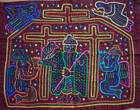
Saint Francis
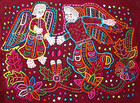
Two Angels

Guardian Angel

Praying Angel
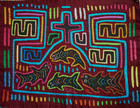
Cross & Fishes
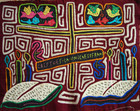
Christ, the Only Hope
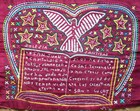
Holiness Church
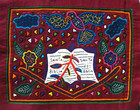
Holy Bible
